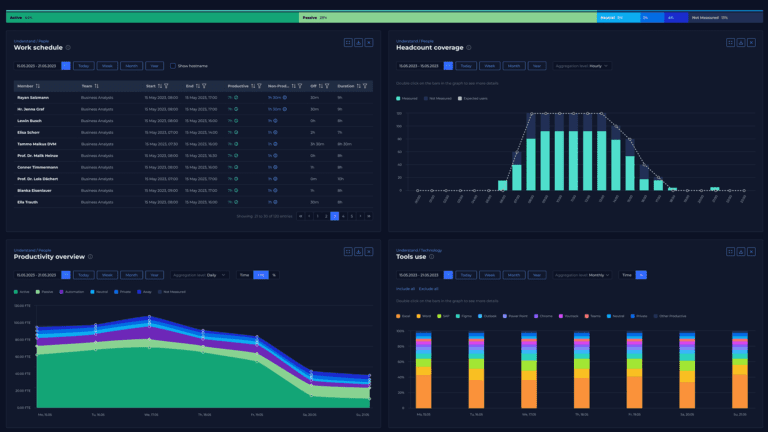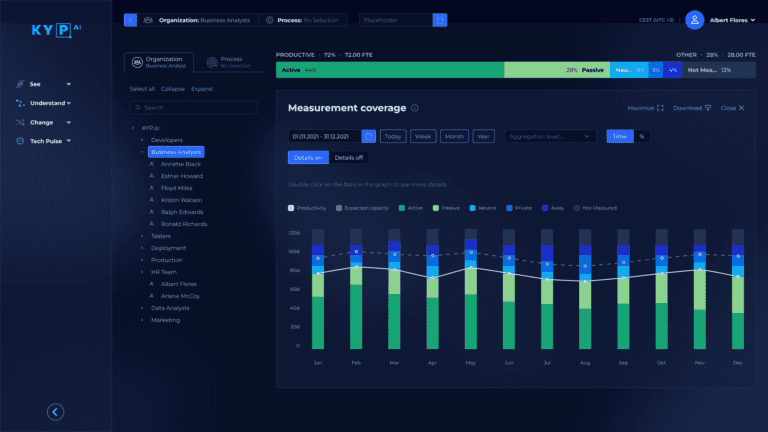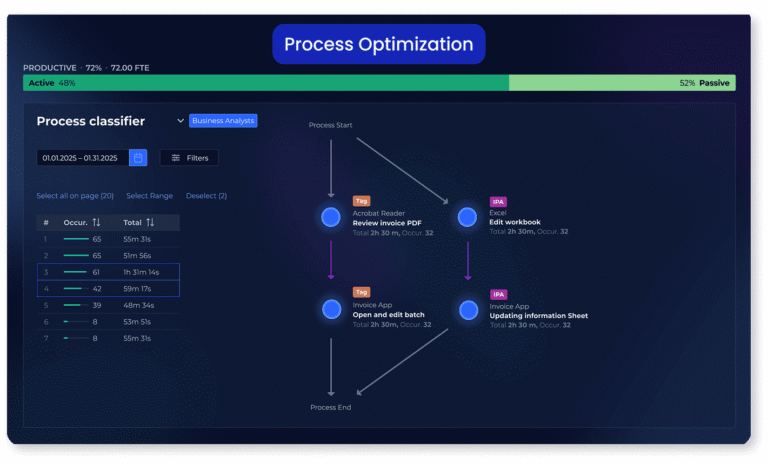Process mining and task mining burst into the scene several years ago and have since been treated as backstage tools used to refine operations and provide decision-makers with visibility into their processes. Today we have productivity intelligence that offers much more; It encompasses not just processes but also people and technology.
This holistic approach provides the most complete picture of how work gets done within an organization, uncovering hidden friction that disrupts productivity. By offering insights into problems stemming from, for example, process design flaws, insufficient staff training, or sluggish systems, productivity intelligence empowers decision-makers to take meaningful, informed action.
There is yet more to productivity intelligence and this is the main subject of this article – companies that have embraced it are developing new capabilities. They are breaking down processes into atomic tasks that can be mixed and matched to deliver flexible services in support of business strategy.
Driving Strategy with Productivity Intelligence
In the past, process mining and task mining were the go-to technologies to find opportunities for process automation. Some organisations also used them for optimizing processes.
Now, visionary companies are choosing to do much more by harnessing productivity intelligence instead. They are breaking down complex workflows into atomic tasks that are then treated as the building blocks for creating standardized processes and reusing assets. This is enabling enterprises to architect smarter, more adaptive services by moving away from rigid, pre-defined workflows by:
- Firstly, breaking down complex processes into atomic tasks.
- Secondly, mixing and matching them to cater for the organisation or their customers’ specific needs, based on strategy.
This blending of standardised reliable tasks making up customized processes is helping with new styles of service delivery.
Take the process of handling chat in customer contact management. You can formulate a standardised process of handling frequently asked questions that uses the atomic tasks concept. For example, you can capture the text of the best answers that the most experienced employees give in their chats with customers in one line of business and reuse them in another with minor modification.
This results in reuseable assets – a library of best answer text and information that can be used to train a chatbot to tap for different use cases where the same questions are often asked e.g. when customers are returning products to get a refund or to arrange an exchange, in fast food order processing where the delivery is late or wrong.
Atomic Task Pricing
Atomic tasks enable another important capability in support of a sales strategy. That is implementing a new flexible pricing model based on the tasks as the base unit, multiplied by the frequency of their delivery. Productivity intelligence is the ideal tool for this model, firstly to enable the breaking down of complex processes into atomic tasks and then providing data on their completion for invoicing.
These are just some examples of the benefits of atomic tasks and with maturity of adoption of productivity intelligence we will learn more about their potential.
Productivity Intelligence as a Cornerstone of Future Business Strategies
There is much more to productivity intelligence than process mining and task mining. It is a foundational element in building innovative service delivery models. By transforming how and what we understand about our processes and their intersection with people and technology, productivity intelligence lays the groundwork for smarter, faster, and more creative workflows that have the potential to redefine industry standards. This technology is not just about doing things better; it’s about aiming higher and achieving bigger goals.
Discover Your Productivity Potential – Book a Demo Today
Book Demo








